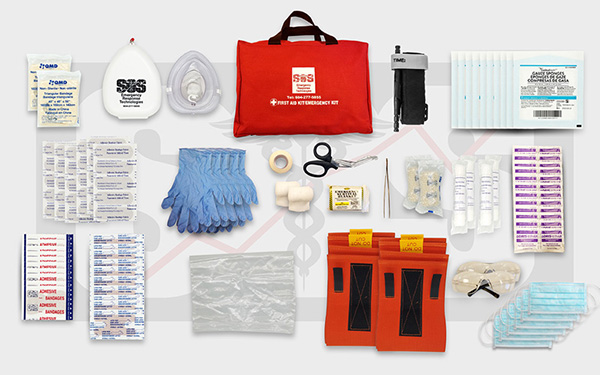
Blog
Province regulations specify minimum requirements that employers must meet and the contents of the first aid kit at work should be guided by the first aid needs assessment completed by your OHS team. Your OHS department knows the workplace better than anybody else and site-specific assessments should be regularly conducted to identify potential hazards that employees are exposed to at the place of work. This hazard assessment will identify the individual needs of the workers in order to choose a first aid kit that not only meets provincial requirements but one that can properly handle the most likely problems to occur. Looking for a more robust or custom first aid kit? Contact us today and one of our knowledgeable team members will work with you from beginning to end to make sure you have everything you need. Keep your first aid well-stocked with extra supplies at all times: You never know when a disaster or crisis will hit.
Items I like to make sure to add to my first aid kit:
- Large gauze pads are easier to cut down to size than trying to make smaller pads fit over a large wound. If you can only choose one size pad, go for the larger size such as a 4″ x 4.”
- Non-stick dressings would be a good idea, otherwise the bandage will have a tendency to stick to the wound and this makes dressing changes difficult.
- Waterproof dressings can come in handy, as they can be used over clean skin and are flexible enough for camping and hiking activities
- Emergency blanket – besides being used as a blanket, it can be used for shelter and the fluorescent orange/shiny silver can help attract attention.
Always go for branded items and make sure you check the expiration date of all available first-aid items with you. The most useful items in a first aid kit are gauze, gauze pads, ice packs, steri-strips, butterfly bandages, ace bandages, slings, splints, and glucose for diabetic situations.
Click here to see our line of First Aid Kits
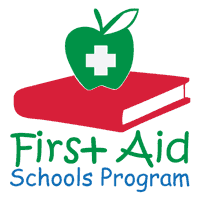
Blog, School
You can’t be everywhere as a teacher or school administrator but you know you can always do more to put the elements in place for more complete school safety. Yes, you figure it takes a special combination of supplies and training. The question is: How do you even begin to know what kind of supplies you might need? Where would those supplies be located and how many of these items is sufficient? What kind of emergency response training does your staff need? Let’s take a quick look at the essentials and then we’ll provide you with an easy way to ensure you’ve checked all the boxes on many of the major safety items and know-how your staff should have in place every day the bell rings.
The First Aid List
WHAT:
Ice packs, gauze pads, adhesive tape, burn aid dressing, disposable nitrile gloves, tweezers, thermometer, bandage scissors, antiseptic wipes, antibiotic ointment, hand sanitizer, bandages, and emergency eyewash.
WHERE:
Don’t make the mistake of putting your first aid items in one location alone, like the school office. Injuries can happen anywhere, after all. So in addition to common areas think about the classrooms that carry a higher degree of risk, such an industrial arts room, science lab or home economics class.
The “No Seconds To Lose” Emergency List
WHAT:
Fire extinguishers, bleeding control kits and Automated External Defibrillators (AEDs).
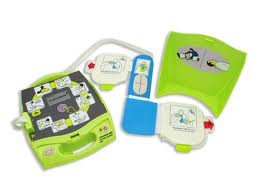
ZOLL AED
WHERE:
When the hazard is far more serious and carries a life-threatening risk where there’s no time to spare, this is one category of product that you can’t be thin on. Obviously most school facilities will carry a fire extinguisher or two, but the locations may be few and far between. The same is also very true for AEDs – if there is an event of Sudden Cardiac Arrest and the victim has no more than 10 minutes to be resuscitated, having just one AED at the exact opposite end of the school could be a terrible miscalculation. Finally, a bleeding control kit=; complete with tourniquets, gauze and compression bandages is a critical component in responding to traumatic bleeding situations.
The Know-How List
WHAT:
Training on CPR, First Aid and AED operation.
WHERE:
All teachers and school administrators should be trained on the latest methods for how to perform CPR and operate an AED as well as administer first aid. In a way, your people are their own mobile first aid stations everywhere they go throughout the school campus, which means it’s not enough to have a full array of safety-oriented products. Knowing when, where and how to use all of them is key. When combined with the knowledge of how to operate those products and perform key safety procedures, your staff can go a long way toward minimizing degrees of injury or even save a life.
How to Begin
With The SOS School Safety Sweep.
You’ve got plenty on your plate as it is. So how do you handle everything else that’s important for keeping your school running smoothly while bringing in the right supplies and tools for school safety? Don’t worry. SOS Emergency Response Technologies has thought of that with a program designed just for you.
The SOS School Safety Sweep is a thorough yet highly efficient evaluation by one of our safety consultants at your school facility. So you don’t have to struggle to think about where you’re going to place that first aid cabinet or how many AEDs you need or who is and isn’t trained in CPR. After our walk-through of your facility and school campus, we’ll take care of the recommendations for you. And when it comes to all the essential safety training, we can bring your staff up to speed with interactive sessions that they can easily fit into their schedule.
Make better school safety a top priority this year and schedule an SOS School Safety Sweep today. Call SOS at 604-277-5855
Blog

NAOSH Week’s goal is to focus employers, employees, partners and the public on the importance of preventing injury and illness in the workplace, at home and in the community. The success of NAOSH Week is rooted in a community–based approach. Across the country, NAOSH Week events and activities are coordinated by local, provincial and/or regional committees, comprised primarily of volunteers, who share a focus and vision of safer workplaces and communities. Partnerships with government, business, suppliers, CSSE Chapters, community health organizations and other safety groups provide the support, resources and network necessary to manage the NAOSH Week plans.
*taken from http://www.naosh.org/*
Here at SOS Emergency Response Technologies we are dedicated to improving the health and safety of people in all areas of their life, including work. Visit our resource pages for more information on the training and products we provide to keep your workplace a safer place. Be sure to check out:
Emergency Oxygen in the Workplace:
AED’s :
Emergency Preparedness & First Aid Kits:
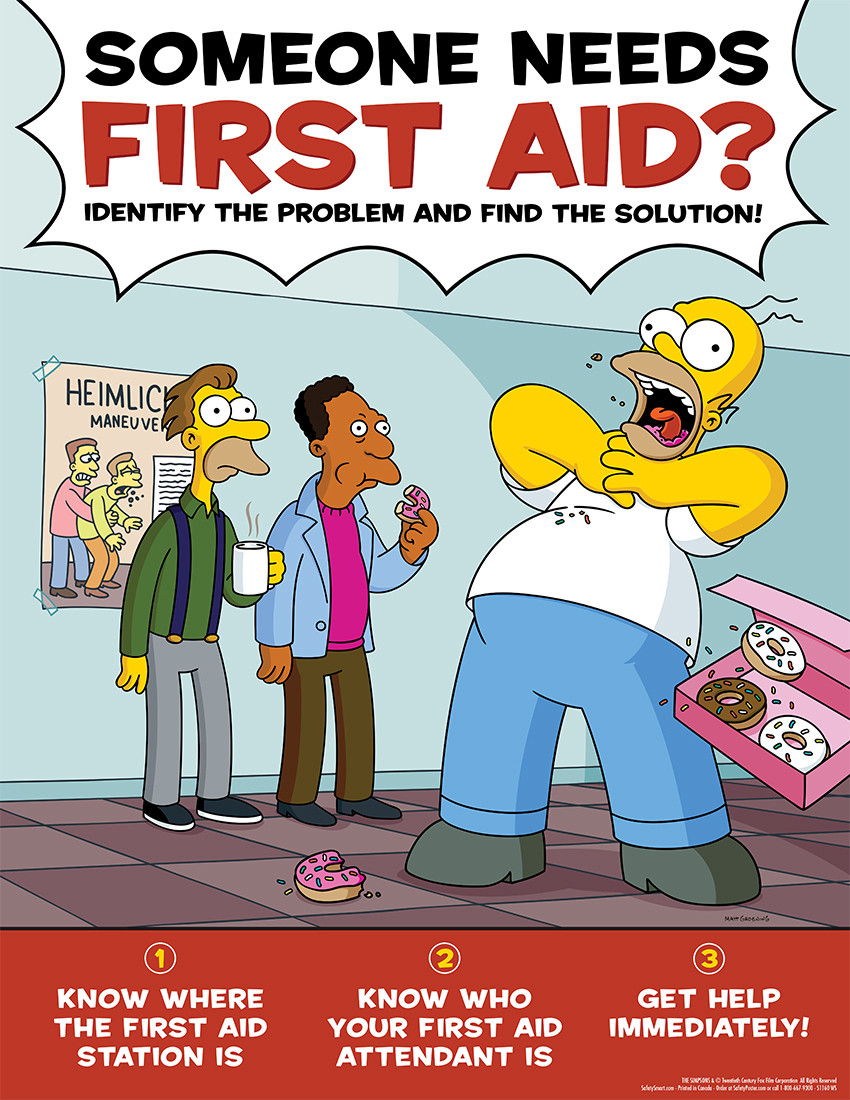
Blog
Our office recently received a phone call from a low-risk office client. As this call came from an office client, in the workplace they rarely deal with first aid calls. However, a few weeks ago an employee experienced a scenario, was white-faced, light-headed and fainted. Then things went sideways. The co-workers who witnessed the episode panicked, did not remember company first aid protocol and in error left the patient alone. Neither co-worker picked up the phone to call the company first aid attendant. Instead, each went looking for the attendant, and as a result, the patient was alone for up to 5 minutes. When the attendant arrived on site with the SOS oxygen unit and first aid kit, he/she directed a staff member to call 911. However, additional time was lost as the first aid room (where the oxygen unit and kit were kept) were in the opposite direction of the first aid scenario. The staff member that was asked to call 911 froze – this occurred two more times. Several more response minutes were lost. Finally, a co-worker responded and left the area to call 911. However, the caller now had “no eyes” on the scenario and was unable to answer questions that the 911 operator was asking. In addition, the employee on the phone with 911 did not know or couldn’t remember the address of the building.
After de-briefing the client, I reassured them that the response from staff was not uncommon and there were a three simple things that could be put in place in the workplace to improve the response to future first aid scenarios.
- Once a month practice first aid scenarios with staff. Ex. simply have a co-worker lie on the floor and have other staff members practicing calling the first aid attendant and 911. Walk through the steps on a regular basis so the responses become second nature
- In addition to having a SOS oxygen unit in the first aid room, it is beneficial for the first aid attendant to have one and a first aid kit as his/her desk, so that they have the required equipment to respond quickly
- Label each phone in the workplace with at minimum the address and phone number of the workplace; if there is more room list the workplace first aid protocol

Blog
The Canadian May long weekend has passed which means camping season has officially begun. Minor injuries and illnesses can ruin a camping trip if you don’t have a first aid kit stocked with the right supplies. A well-equipped first aid kit is an essential item to pack for any camping road trip.
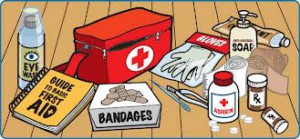
Here is a list of items to consider including in your first aid kit:
Bandages and Dressings
- Elastic bandages (Band-Aids; for everyday cuts and scratches)
- Adhesive and butterfly bandages (effective for use in the closure of a deep cut or wound)
- Roll bandages (when moderate compression is needed
- Triangular bandages (for head or appendage, as a handy arm sling, or even as a tourniquet)
- Sterile gauze pads/non-adhesive dressings (ideal for cleansing and covering larger cuts, scrapes and minor burns because they are highly absorbent)
- Large wound dressings
- Blister dressing (particularly useful if you plan to do a lot of walking)
- Adhesive tape cloth-based (can be used to hold bandages and dressings in places)
- An ice pack (to cool and reduce swelling)
- Splinting materials (to provide support to an injured area to stop it moving)
Miscellaneous Essentials
- Safety pins (to secure bandages)
- Scissors (to trim bandages and other uses)
- Tweezers and needles (to remove splinters or ticks)
- Antiseptic wipes (used to clean wounds, cuts and scrapes and help prevent infection)
- Cotton swabs/cotton wool (used to apply ointments)
- Thermometer (for taking your temperature, useful if you have a fever or are not felling well)
- Non-latex gloves (help prevent the spread of infection into an open wound from the hand of someone cleaning / treating it)
- Large plastic bag (for soiled bandages and other used medical items)
Medications
- Topical antibiotic cream
- Oral antihistamine (such as Benadryl)
- Medications for pain or fever (such as Acetaminophen or Ibuprofen)
- Hydrocortisone cream (1%) (for insect bites)
- Diarrhea /vomiting medication (such as Imodium or Compro)
- Anti-acids (such as Tums or Rolaids)
- Eye drops (sooth irritated eyes)
- Travel / motion sickness medication (in the U.S. need a prescription for most medication)
- Personal medications (if you or anyone in your group suffers from any illnesses)
- Anti-inflammatory medication (such as Aleve)
Other medications to consider, depending on the time of year and where you’re going:
- Bee sting kit
- Snake bit kit
- Poison ivy cream/cleansers (such as Zanfel, TechNu or Band-Aid)
- Aloe vera gel or other moisturizer (for sun burn)
- Sinus medications (if it’s allergy season and you know you suffer badly, such as Claritin)
Some final tips:
- Replenish your first aid kit if any items are used and check medications for use by dates
- Pack your first aid kit in a well-labeled waterproof container. Make sure everyone in your party knows where it is kept
- Keep your kit as compact as possible, consider removing tubes of cream or ointments and strips of pills from their cardboard box and simply cut out the instructions. Keep them together with an elastic band
- Know how to use the items in your first aid kit, familiarize yourself with everything that’s in it, especially if it’s a pre-packaged one
- Tailor your first aid kit to the kind of trip you’re taking, the time of year and your own or families’ personal medical needs
- Bring a first aid manual if you are unfamiliar with basic first aid
- Consider taking a first aid class if you do not have any basic first aid knowledge, particularly if you have children.
Visit our online shop to view any of our ready made first aid kits https://sostech.ca/product-category/shop-online/







